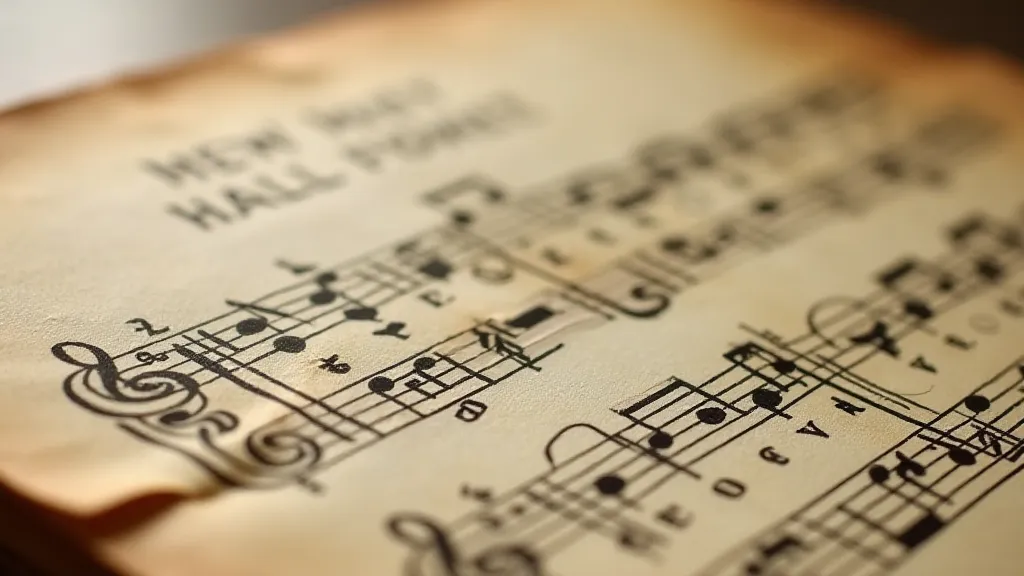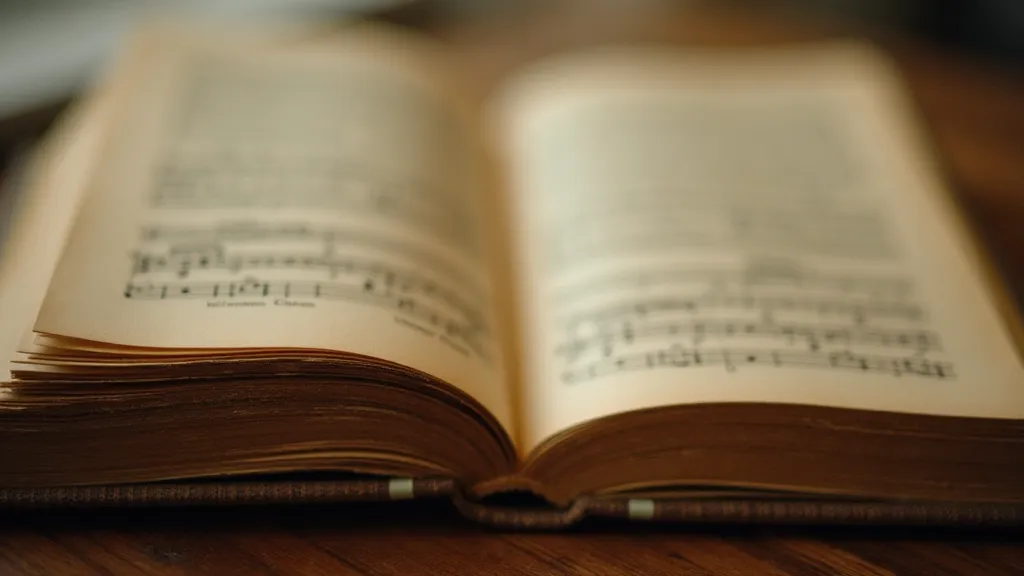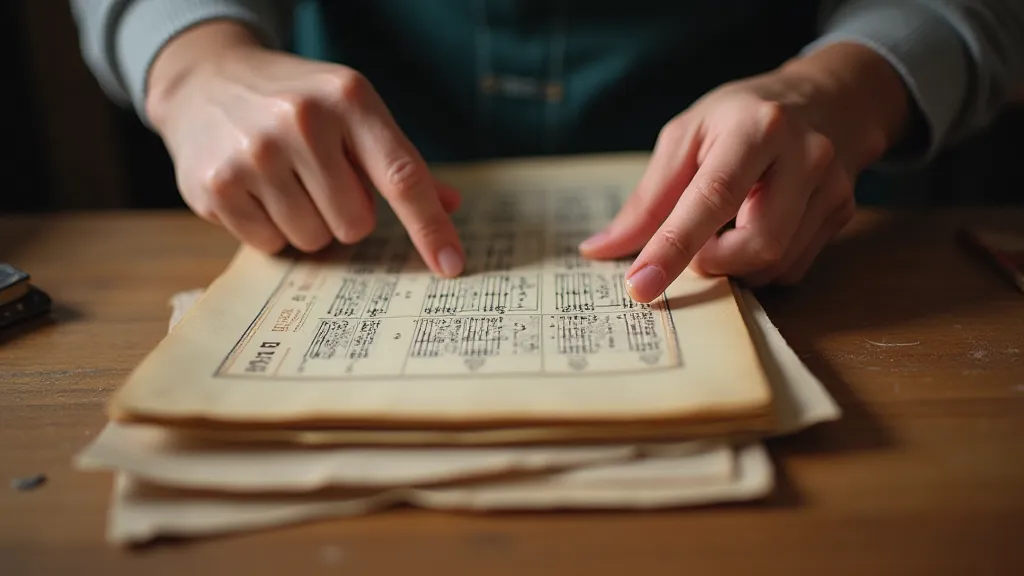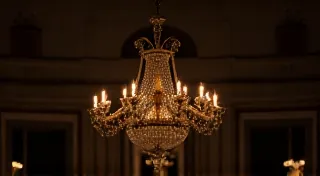A Spectrum of Binding: How Sheet Music Form and Presentation Shaped Its Fate
There’s a particular scent that clings to vintage sheet music—a mix of aged paper, brittle ink, and the faintest whisper of forgotten melodies. It’s a scent that transports me, instantly, to a time when music wasn't streamed, but treasured—pored over, played, and passed down. My own fascination with vintage sheet music began, as many things do, with a family heirloom: a small, worn accordion my grandfather played. He’s gone now, but the faint imprint of his fingers on the bellows, and the tattered collection of sheet music bound in a simple, fabric cover, remain tangible links to his passion. It wasn't just about the music; it was about the physical object, the tangible expression of artistic creation.
That simple, fabric-bound collection led me down a rabbit hole – a journey into the fascinating world of sheet music collecting. And what quickly became apparent was that the way sheet music was *bound*, its very presentation, profoundly influenced its fate. It dictated how easily it circulated, how well it was preserved, and ultimately, how much of its history survived to reach us today. Understanding this legacy requires appreciating the broader context of how music's popularity waxed and waned, and how that directly impacted the survival rates of different formats. The very notion of a "hit song" and its life cycle is deeply intertwined with the evolution of sheet music.
The Ephemeral Single Sheet
In the earliest days of widespread music publishing, particularly in the 18th and early 19th centuries, single sheets were the norm. These weren’t lavish productions; they were functional documents intended for immediate use. Imagine bustling city streets filled with vendors hawking these single sheets, advertising the latest popular songs, dances, or operatic arias. They were a quick and inexpensive way to capitalize on the fleeting popularity of a tune. Their ephemeral nature, however, meant they were easily discarded, worn, or lost. Very few survived intact, making them exceptionally rare and valuable today. The rise and fall of a popular song often determined whether any copies even made it into collectors' hands.
The challenge with these single sheets isn’t just their fragility; it’s the *lack* of preservation. They were often folded repeatedly, leading to creases and tears. The paper itself was usually lower quality, designed for affordability rather than longevity. The ink, often lithographic, could fade or smear. Discovering a single sheet in decent condition feels like uncovering a tiny, precious fragment of a lost world. The stories behind these forgotten melodies, and the lives of those who created and enjoyed them, are often shrouded in mystery, lost to the relentless march of time.

The Rise of Stapled Music: Mass Appeal and Mass Discard
The invention of the stapler in the mid-19th century revolutionized sheet music production. Suddenly, multiple pages could be bound together, allowing for longer, more complex pieces. This coincided with the burgeoning popularity of parlour music – songs and ballads intended for amateur musicians to perform at home. Stapled sheet music became a mainstay, and vastly outnumbers single sheets in most collections. The ability to quickly and cheaply produce longer works meant a wider audience could access more ambitious musical compositions.
While stapled music was more durable than single sheets, the stapling process itself wasn’t always gentle. Over time, the staples can rust, leaving unsightly stains and causing further paper damage. The paper itself, while often thicker than that used for single sheets, was still relatively inexpensive, and prone to yellowing and brittleness. The sheer volume of stapled music produced means that many copies were carelessly discarded, contributing to the scarcity of truly pristine examples today. Identifying a copy that has been treated with care - perhaps carefully stored in a box, or kept away from direct sunlight – is a collector's joy. The rise of this mass-produced format shifted the dynamic between composer, publisher, and consumer, fundamentally changing the musical landscape. Understanding the evolution of these formats truly highlights the visual storytelling that often adorned these covers and its impact on what survives to us today.
Bound Books: The Serious Musician’s Companion
For serious musicians, music teachers, and those with a deep appreciation for music, bound books represented the pinnacle of sheet music presentation. These were often cloth-bound, with embossed titles and intricate cover designs. They contained collections of songs, exercises, or complete scores. The quality of the paper was generally higher, and the binding was designed to withstand years of use. The care taken in producing these books reflects the value placed on the music within. The preservation of these volumes provides a window into the formalized musical education of the time.
Bound volumes, however, present their own challenges. The glue used to hold the pages in place can deteriorate, causing pages to loosen or fall out. The cover cloth can become frayed or torn. The spine can crack or break. Finding a bound volume in exceptional condition – one where the binding remains strong, the pages are clean, and the cover is intact – is a rare and treasured find. These volumes often offer a fascinating glimpse into the musical landscape of their time, reflecting both the popular tastes and the formal training of the era. Investigating these volumes can sometimes reveal the intricate designs that embellished them who, despite their talent, were lost to the passage of time.

Beyond the Binding: Presentation and Value
The way sheet music was presented wasn’t just about durability. The cover design, the illustrations, and even the font used all contributed to its appeal and value. Early color lithography, for example, was a significant expense, so brightly colored covers instantly became more desirable – and ultimately more collectible – than those printed in black and white. The artistry involved in creating these covers further elevated the perceived value of the music itself.
Illustrations were often integral to the appeal. Victorian sheet music, in particular, is filled with charmingly sentimental illustrations – romantic couples, idyllic landscapes, and depictions of theatrical productions. These illustrations provide a visual record of the era and add another layer of interest for collectors. The skill of the engraver or lithographer can sometimes be as valued as the music itself. Examining the trends in these illustrations offers insight into the prevailing social and aesthetic values of the time.
The Collector’s Perspective: Preserving a Legacy
Collecting vintage sheet music isn't just about accumulating objects; it's about preserving a cultural heritage. Each sheet of music tells a story – about the composer, the performer, the audience, and the times in which it was created. The binding, or lack thereof, is a crucial part of that story. It’s a physical manifestation of how the music was intended to be used, how it was valued, and ultimately, how much of it survived. Understanding how musical tastes evolved across different periods necessitates studying the format in which the music was distributed.
For me, examining the binding of a piece of vintage sheet music is like holding a piece of history in my hands. It’s a connection to my grandfather and his accordion, and a deeper appreciation for the enduring power of music. It’s a reminder that even the most seemingly ephemeral objects can hold profound meaning and provide a window into the past. Examining the arrangement of music across these different formats reveals the fleeting nature of their popularity, providing a unique perspective on how these tastes have shifted over time.

The next time you encounter a piece of vintage sheet music, take a moment to consider its binding. It’s more than just a way to hold the pages together; it’s a silent witness to the music’s journey through time. The preservation of these historical artifacts requires a nuanced understanding of how various aspects, from the ink used to the techniques employed, contributed to their longevity - a pursuit that touches upon authenticity and restoration efforts. Ultimately, it's about ensuring that these fragile pieces of the past continue to resonate with future generations.





